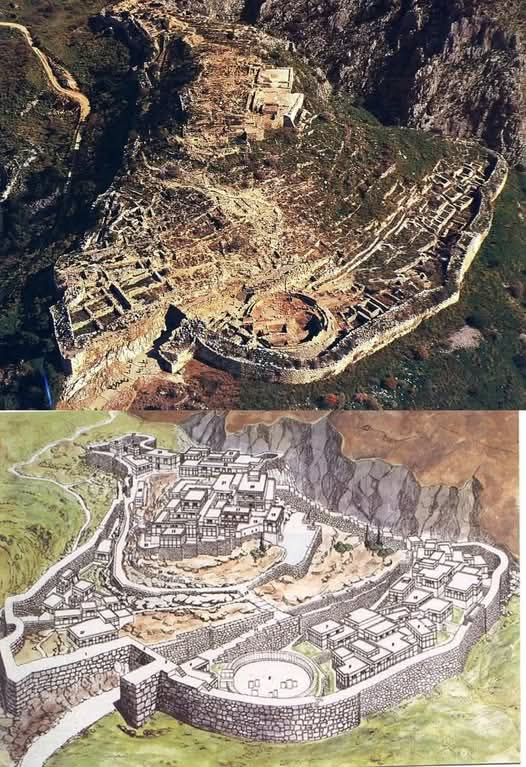Mycenae, one of the most iconic and influential cities of the ancient Aegean world, flourished between the 16th and 12th centuries BCE as the political and cultural heart of the Mycenaean civilization. Located in the northeastern Peloponnese, strategically nestled among rugged hills and overlooking the fertile Argolid plain, Mycenae rose to prominence during the Late Bronze Age, establishing itself as a dominant force in the eastern Mediterranean.The city’s legendary status was immortalized in the epic poetry of Homer, who named Mycenae as the home of King Agamemnon, the commander of the Greek forces in the Trojan War. This connection between history and myth has fascinated generations of scholars and travelers alike, blending archaeological discovery with ancient storytelling.At the height of its power, Mycenae was a center of culture, military prowess, and far-reaching trade. Its rulers governed over a network of territories, controlling economic routes that stretched as far as Egypt, Anatolia, and the Levant. Mycenaean artisans produced finely crafted pottery, jewelry, weapons, and elaborate frescoes, many of which have been unearthed in palatial ruins and elite tombs. These artifacts reflect both the sophistication and international connections of the society.Perhaps most famous is the Lion Gate, the grand entrance to the citadel and one of the earliest known examples of monumental sculpture in Europe. The gate’s relief of two lions flanking a central column is a powerful symbol of authority and architectural ingenuity. Behind it rise the Cyclopean walls, named for their colossal limestone boulders that, according to legend, could only have been placed by giants. These imposing fortifications exemplify the Mycenaeans’ advanced engineering and defensive strategies.Within the citadel lie the remains of grand palaces with megarons (central halls), storerooms, and administrative buildings, revealing a complex bureaucratic society that used Linear B script—the earliest form of written Greek. The discovery of Grave Circle A, with its shaft graves filled with golden death masks, weapons, and ornate artifacts, offered a treasure trove of insight into elite Mycenaean burial practices and social hierarchies. Among the most famous finds is the so-called Mask of Agamemnon, a gold funerary mask that continues to captivate public imagination, though its association with the Homeric king remains unproven.Beyond the citadel, Tholos tombs such as the Treasury of Atreus—grand beehive-shaped burial chambers—further illustrate the architectural sophistication and ceremonial importance of Mycenae’s elite. These tombs were monumental in both scale and symbolism, reflecting the city’s reverence for its royal dead and its emphasis on legacy and lineage.The decline of Mycenae around 1200 BCE, part of the broader collapse of Bronze Age civilizations, marked the end of an era. The reasons remain a topic of scholarly debate, with theories ranging from natural disasters and internal strife to foreign invasions and economic upheaval. Despite its fall, Mycenae’s cultural and mythological legacy endured through Greek literature, especially in the epics of Homer and the tragedies of Classical Athens.Today, the archaeological site of Mycenae, a UNESCO World Heritage Site since 1999, stands as a powerful testament to the achievements of an early Greek civilization. Visitors from around the world come to walk among its ancient ruins, gaze upon its treasures in the nearby museum, and imagine the lives of the people who once called this fortress city home. The ongoing excavations and studies continue to enrich our understanding of Mycenaean society, solidifying Mycenae’s place as a cornerstone of both Greek heritage and world archaeology.
